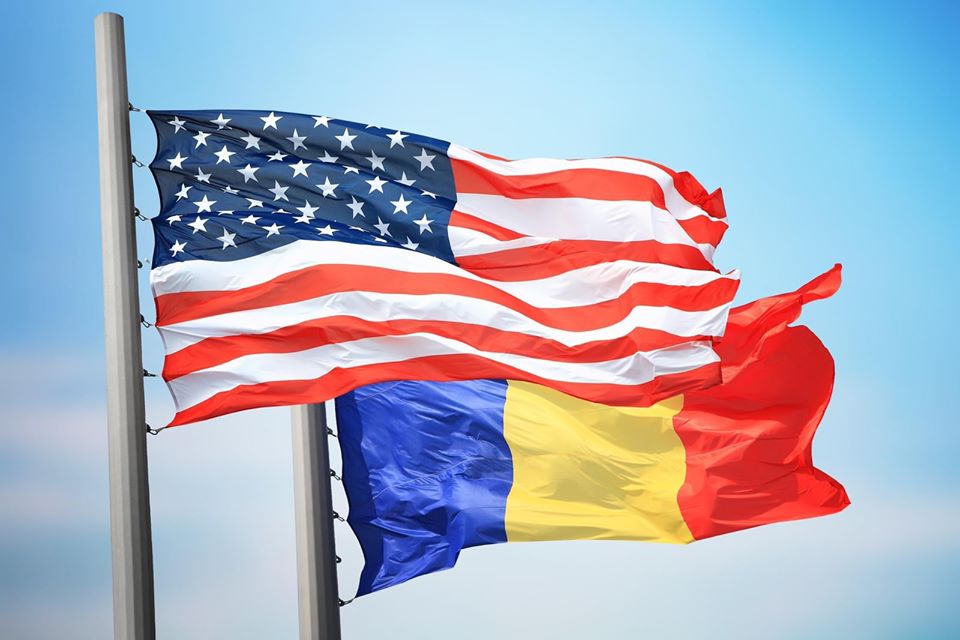If it is not always clear why things are happening as they are, we try to look at the big picture, many things can fall into place.
If we look at it through a geopolitical lens, a series of otherwise "innocent" domestic political events in Romania are connected, even if they are not apparently, and if we are not conspiracy theorists.
It is about the fact that since the regime changes in Eastern Europe three decades ago and the collapse of the Soviet Union and the end of Russian influence, the United States of America treats the region, to which Romania also belongs, as a priority geopolitical region. Looking back from the present, a few years after the Russian occupation of the Crimean peninsula and nearly a year and a half after the attack on Ukraine, Washington's attention to the region is clearer than the sun and completely understandable. The bloody South Slavic wars of the 1990s also warned America about the dangerous perspective that unsettled ethnic problems could project in the Balkans and Eastern European region.
In addition to its size and location, the key strategic importance of Romania is also enhanced by the fact that, after the turbulent 1990s, the country's leadership (either the government, sometimes the president, sometimes both)
strongly and unwaveringly pro-American and willing to cooperate with Washington,
be it the authorization of the operation of secret CIA prisons, the purchase of fighter jets, the construction of money-sucking highways (we remember the American Bechtel, right), the American interests in the extraction of oil and gas in the Black Sea, and the list goes on.
The most important element is obviously that Bucharest "allowed" one of the elements of the American missile shield (Deveselu) to operate in the country without any problems, and then major American military bases were built on the Black Sea coast, near Konstanz and also in Aranyosgyéres, in Brasov County. Large-scale NATO military exercises with significant American participation should be held in Nagysink.
We also know that the anti-corruption fight in Romania was started with strong American suggestion and political support, because Washington saw a geopolitical security risk in Romania's grand corruption. President Klaus Iohannis is well-liked in the White House (whoever is the president), the US State Department and the Pentagon, and his election as president in 2014 was almost treated as an American affair and supported against then-Prime Minister Victor Ponta, in whom Russian interests their representative was seen.
It is also an open secret that every important decision in Romania is preceded by a consultation with the American ambassador, be it the adoption of important laws, elections or other far-reaching decisions.
And of course, let's not forget the role that the American NGO called Project on Ethnic Relations (PER) (meaning: an American advocacy, informal foreign policy entity disguised as an NGO) played in inter-ethnic relations in Romania from the 1990s, especially
in keeping Romanian-Romanian-Hungarian relations at a moderate level,
which, after the Black March of 1990 and in the light of the Balkan wars, was a particularly important geopolitical objective of Washington in the eastern part of Europe.
Starting with the series of meetings known as the Neptune affair, which was followed by several similar conciliation meetings organized in Romania and abroad, PER's pragmatic goal was to bring the "parties" to the table by bringing the leaders of Romania and Romania's Hungarian (that is, RMDSZ) leaders to the table. to find a peaceful and lasting solution to keep inter-ethnic relations at a peaceful level. The direct consequence of this process is that RMDSZ, which traditionally has 5 percent support at the national level, has been a member of the governing coalitions in Bucharest for decades, albeit with minor interruptions.
With the disintegration of the Soviet Union and the decline of Russian influence in the region, the United States wanted to reliably and predictably increase and maintain its influence in Eastern Europe, specifically in Romania, which had become a NATO member in the meantime, and such a stability plan would have been weakened from within by an internal ethnic, Romanian- Hungarian opposite.
The following decades, especially the recent events, proved Washington right: after Russia invaded and annexed the Crimean peninsula, which until then belonged to Ukraine, in 2014, it was already apparent that
Due to its geographical position, Romania will have a prominent role in the security policy of the region.
Because NATO member Turkey has proven to be unreliable, and Bulgaria, which is also on the Black Sea coast, has been struggling with deep and seemingly intractable problems for many years (serial political and government crisis, general corruption, the continuous presence of underworld elements in big politics, etc.). Thus, the United States saw in Romania its only reliable ally among the NATO member states on the Black Sea coast. The extremely important strategic role of Romania was further enhanced by the war that Russia launched against Ukraine in February 2022. In the war situation, next to Warsaw, Bucharest became Washington's most important partner in the defense formula of NATO's eastern wing.
In parallel with the mediating work of the PER operating in Romania between 1991 and 2012, this "equalizing" work continued on diplomatic and other political levels. In addition to the top politicians of the RMDSZ, the local leaders of Székely were also involved in the discussions. For example, in September 2016, the American ambassador Hans Klemm took a photo with Györgyön Sepsiszent with the Székely flag in the company of local leaders, when he was informed about the affairs of the Hungarian community on the spot. Over the past years, the American vice president, Washington ministers, senators and other high-ranking officials have given the door handle to each other in Bucharest. And let's not forget the gestures made by the strongly Atlanticist President Traian Băsescu (even though he said that there will be as much autonomy in Székelyland as in Caracal): for example, he went to Tusványos and as president regularly spent his vacation in Székelyland or for a long weekend or two. (By the way, a few years ago Klaus Iohannis also made such a gestural visit to Székelyland.)
All this just came to mind again because
a series of recent domestic and foreign political events can be clearly interpreted through a geopolitical lens.
Featured image: Shutterstock












